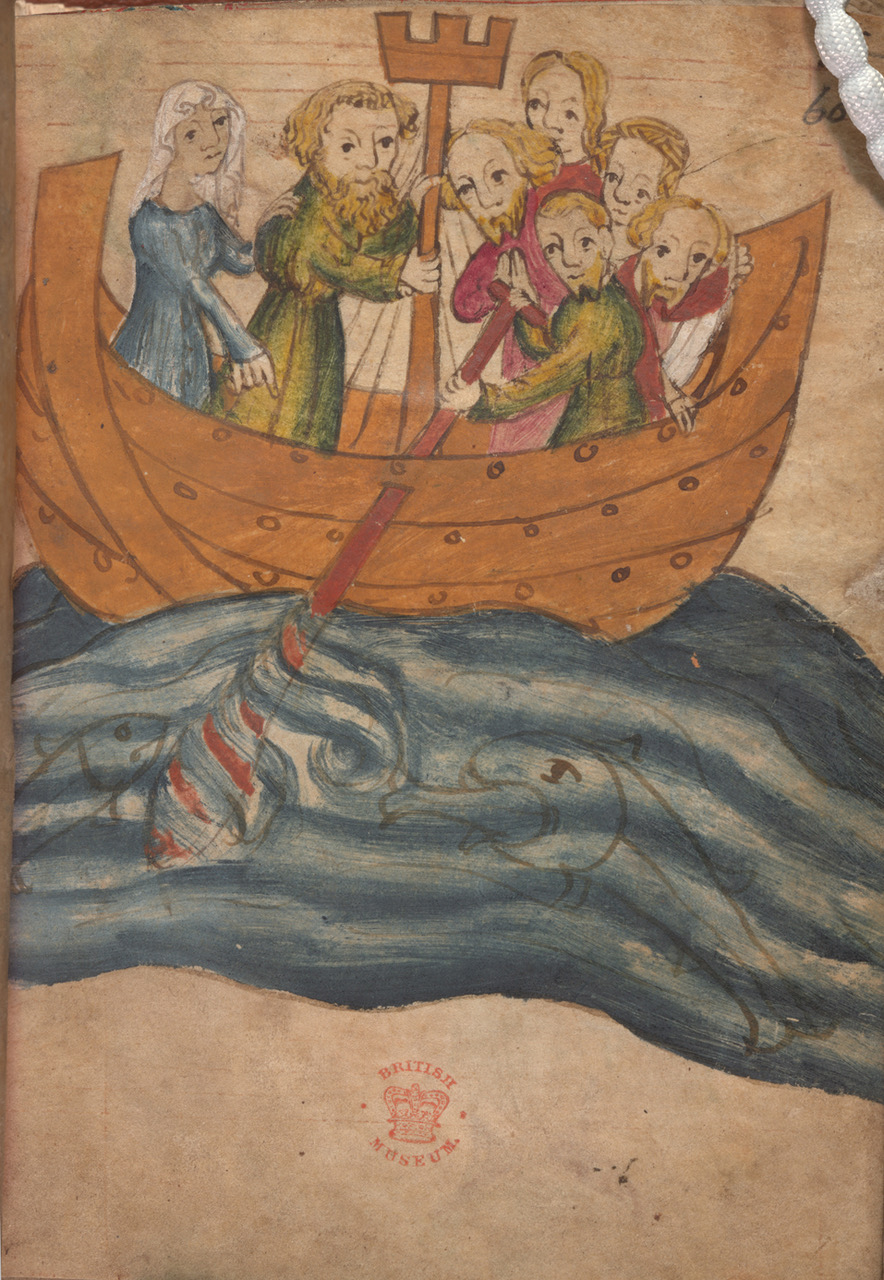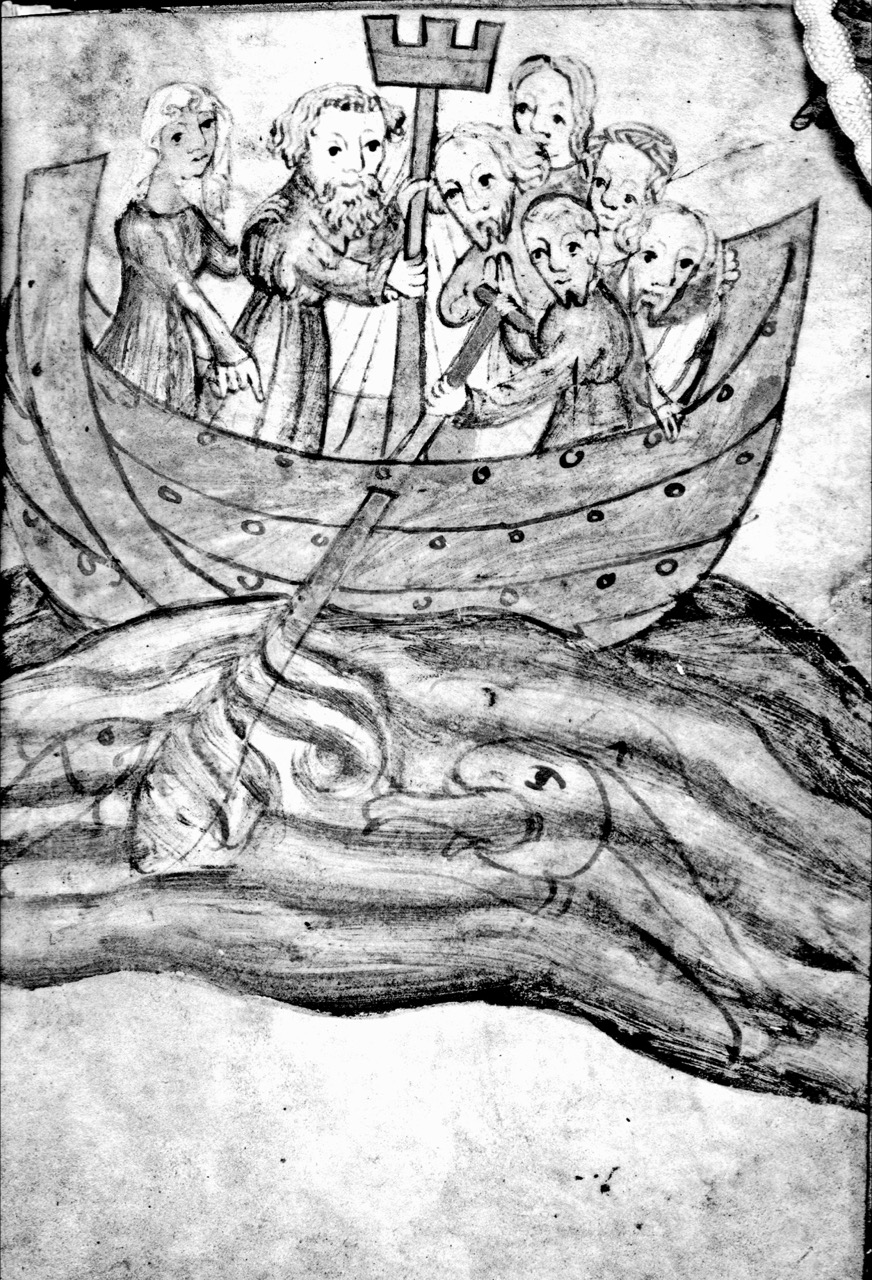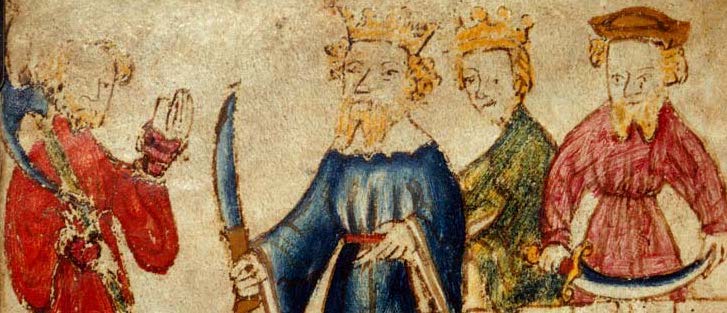The Colors of the Pearl-Gawain Manuscript: The Questions that Launched a Scientific Analysis
Below is Maidie Hilmo’s request for a scientific analysis of the Pearl-Gawain Manuscript, British Library, MS Cotton Nero A.x (January 12, 2014, revised from July 5, 2013). One of the most exciting findings is that it is likely that the scribe was also the draftsperson of the underdrawings. It appears that the painted layers of the miniatures were added by one or more colorists, while the large flourished initials beginning the text of the poems were executed by someone with a different pigment not used in the miniatures.
The purpose of the request was to determine what color pigments were used in the miniatures framing the four poems in this unique copy of the Middle English poems, Pearl, Cleanness, Patience, and Sir Gawain and the Green Knight. The materiality of the pigments is itself an area of research helping to establish the sequence of tasks and the people involved in the underdrawings, the text, the painted layers, and the flourished intitials. The resultant technical analysis offers new research avenues for a study of the iconographic scheme of the miniatures, often dismissed as crude, and new insights into the role and time frame of the people involved.
The outcome of this request—comprising the detailed report on the pigments by the British Library’s Dr. Paul Garside, the Conservation Scientist, and the set of enhanced images, including those by Dr. Christina Duffy, the Imaging Scientist — will become available on the Cotton Nero A.x Project website and, selectively, in forthcoming publications.
Access the full request here.


Illustrating the Gawain Manuscript
Illustrating th e Gawain Manuscript: A Visual Journey Through MS Cotton Nero A.x (art. 3), a draft, forthcoming online at the Cotton Nero A.x. Project, by Maidie Hilmo
e Gawain Manuscript: A Visual Journey Through MS Cotton Nero A.x (art. 3), a draft, forthcoming online at the Cotton Nero A.x. Project, by Maidie Hilmo
New, scientific analysis reveals that the ink used by the scribe is the same as that used by the artist of the underdrawings of the miniatures in the Gawain manuscript (London, British Library, MS Cotton Nero A.x, art. 3). A close study of the miniatures sandwiching the 4 poems—Pearl, Cleanness, Patience, and Sir Gawain and the Green Knight—shows that they are thoughtfully conceived, contrary to previous critical assessments denigrating their quality and dismissing their relevance to the poetic texts. Although the paint layers might well have been applied by another hand, sometimes obscuring the outlines of the underdrawings, sophisticated photographic renderings of the latter delineate more clearly details from the texts or refer to iconographic analogues. By placing them within a larger visual and typological narrative of salvation, these simple miniatures serve to illuminate and unify all 4 poems in this manuscript. Whether or not drawn by the scribe, into whose sphere they can now be more closely situated, the miniatures encourage deeper and more sustained readings of the poems within the context of the manuscript as a whole.
In the image above, Paul Garside, the Conservation Scientist at the British Library, has provided Hilmo with enhanced imagery of the illustrations’ underdrawings, revealing details of Gawain’s armor obscured by the image’s paint (BL Cotton Nero A.x, f. 126/130r, reproduced with permission of The British Library). Gawain, being welcomed home to the court, is still wearing his surcoat, steel shoes, greaves, polished knee pieces, gloves of plate (ll. 567-83), and his high helmet (l. 607).
The full article is available to read online, by clicking on the highlighted title link above.
Header Image: London, British Library, MS Cotton Nero A.x, fol. 94v.

